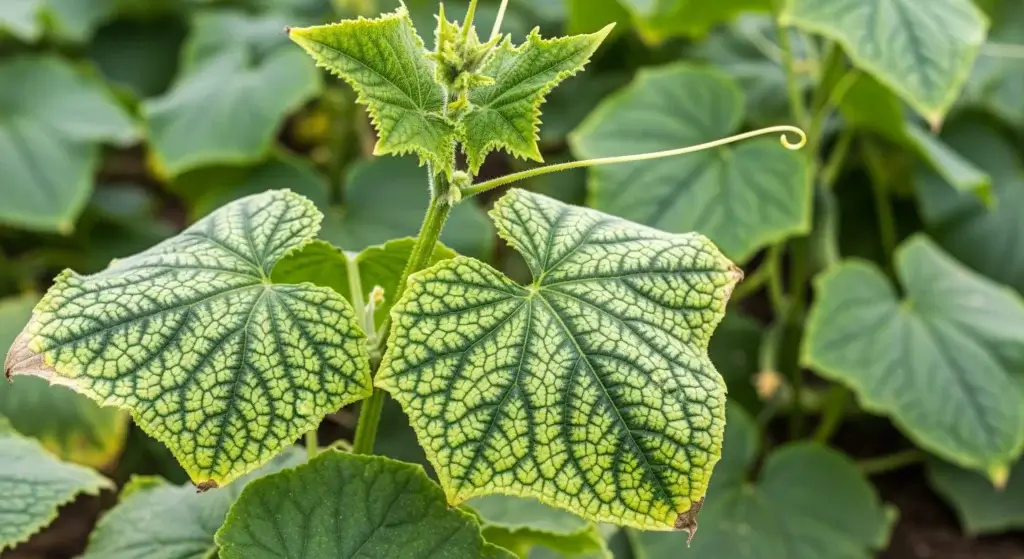
Got squash plants flopping like they just got dumped on reality TV?
You’re probably dealing with squash vine borers—the sneaky stem-invading larvae that act like they own your garden.
They tunnel into your plant’s core (rude), causing wilting, rot, and full-on plant meltdowns.
But don’t go full Breaking Bad with chemicals just yet.
You can totally take these pests down with natural, garden-friendly tactics that won’t wreck your soil or your vibe.
What Are Squash Vine Borers?
Squash vine borers are basically the garden’s unwanted homewreckers—these moth larvae sneak into your squash stems, munch away inside, and cut off the plant’s water supply.
The result? Your squash starts wilting faster than a houseplant in a drought.
- Read also: The Ultimate Guide: How to Prevent Pumpkin Vine Borers
- Read also: Controlling Squash Bugs Organically: Tips for a Healthy Garden
Lifecycle overview:
- Adult moths show up in summer dressed like wasps (fashion deception 101).
- They lay tiny rust-colored eggs near the base of your squash plants.
- Baby borers hatch, dig into your plant like it’s an all-you-can-eat buffet, and feed for weeks.
- Then they peace out underground to pupate like little dirt-dwelling divas—only to come back next year for the sequel.
Signs of a squash vine borer infestation
- Wilting leaves that look super thirsty but aren’t
- Holes near the base with “frass” (that’s bug poop that looks like sawdust—ew)
- Squishy, swollen, or rotting stems
- Vines giving up the ghost despite your excellent watering skills
If you see these signs, don’t panic—but do act fast.
The borers aren’t here to play nice.
It’s time to squash the squash villains.

7 Natural Ways to Eliminate Squash Vine Borers
Here are seven effective, chemical-free ways to deal with squash vine borers using household items, garden techniques, and preventive care.
1. Physically remove the larvae
Got just a few squatters in your squash?
Grab a sharp knife (or scalpel if you wanna feel fancy), a toothpick, and some tape.
Here’s the move:
- Find the little entry hole where the larva is sneaking in.
- Make a tiny vertical cut just above it—think of it as a gentle stem spa day.
- Carefully fish out or squish the grub inside.
- Cover the cut with moist soil and mulch to help your plant heal like a champ.
Pro tip: Wrap the slit with duct tape—yep, duct tape isn’t just for fixing everything else, it also helps your stem bounce back strong.
2. Use floating row covers
This is basically a mosquito net for your plants, keeping those pesky moths from laying eggs.
How to roll with it:
- Toss the covers over your squash as soon as they sprout.
- Keep them cozy under the covers until flowers pop up—then peel back for pollination duty.
- Secure the edges with soil or garden staples so no moths sneak in.
Heads up: This works best if you’re a step ahead and didn’t have a borers’ party last season.
3. Inject BT (Bacillus thuringiensis)
BT (Bacillus thuringiensis) is like the Avengers for your squash—an all-natural bacteria that only targets those pesky caterpillar larvae, leaving you and your garden buddies totally safe.
How to play it:
- Mix the BT concentrate with water (check the label for the perfect recipe).
- Use a syringe to inject it right into the stem, just above where the larva is crashing the party.
- Do this weekly during peak borer season—think late June through early August.
Pro tip: BT hates sunlight like vampires, so aim for early morning or late evening applications.
4. Plant timing and crop rotation
Timing is everything—especially when you’re up against sneaky borers.
Here’s your game plan:
- Plant early to harvest before the borers show up for their summer rave.
- Or go late and dodge the moths entirely after they’ve kicked the bucket.
- Rotate your squash crops around your garden each year—borers don’t like surprises!
- And please, don’t plant your squash where last year’s crop threw its last party; larvae might still be lurking underground.
Smart moves like these keep your garden one step ahead of the borer drama.

5. Apply Diatomaceous Earth (DE)
Think of DE as Mother Nature’s ninja powder—it’s made from fossilized algae and kills bugs by basically drying them out. No poisons, just pure natural pest control.
How to use it:
- Sprinkle the powder around your squash stem base and on the soil like a pro.
- Reapply after rain or watering because DE loves to wash away.
- Early morning is prime time—the dew helps it stick like magic.
Heads up: It’s safe for you but try not to inhale the dust—it’s not a snack.
6. Attract natural predators
Want to recruit a pest-fighting squad?
Attract the good guys—bugs and critters that eat vine borer eggs and larvae like parasitic wasps, ground beetles, and spiders.
How to get them on your team:
- Plant dill, fennel, and yarrow to roll out the welcome mat for parasitic wasps.
- Skip broad-spectrum pesticides—those are like carpet bombs that kill friends and foes.
- Let native wildflowers bloom to keep your garden buzzing with pollinators and pest predators.
Biodiversity is your secret weapon!
7. Destroy affected plants and pupae
When things get really bad, it’s time to go all tactical.
Do this:
- Yank out and burn or trash any plants showing heavy infestation—no compost parties for these bad guys.
- In fall, till your soil to dig up and kill hidden pupae before they hatch next season.
Bonus pro tip: Stick up some yellow sticky traps near your squash to catch adult moths before they drop eggs—think of it as setting a bug-sized Velcro trap.
Bonus: Squash Varieties That Resist Borers
Not all squash are created equal when it comes to dodging those pesky vine borers.
Some have thicker stems or just grow like champs, making them tougher targets.
Give these a shot:
- Butternut squash
- Acorn squash
- Tatume squash
- Kabocha
- Hubbard squash
These varieties either aren’t on the borers’ VIP guest list or can shrug off damage like a pro.

- Read also: Squash Bugs vs. Stink Bugs: A Detailed Guide for Gardeners
- Read also: Tips and Tricks: Top Insecticides for Getting Rid of Boxelder Bugs
Conclusion: Healthy Squash, the Natural Way
Squash vine borers are the ultimate garden party crashers, but armed with these organic tricks, you can kick them to the curb—no harsh chemicals needed.
Going natural means you’re protecting your plants, the helpful bugs, your health, and the planet all at once.
So, stay sharp, garden smart, and get ready for a squash harvest that’ll have you bragging to your neighbors.
Your garden’s about to glow-up, no pesticides required!



